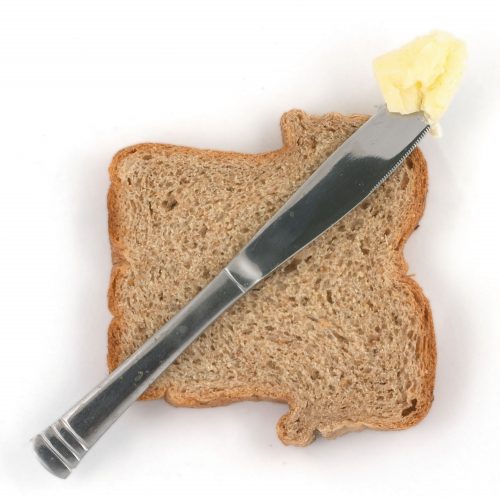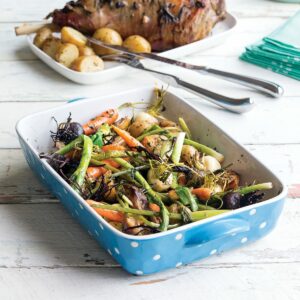
We explain what the labels mean on table spreads.
You may be wondering why this is not entitled 'how to choose butter and margarine'. Both butter and margarine must legally contain at least 80% fat to be given those names. Many spreads are now much lower in fat, even as low as 40%. And that's a good thing for the health of New Zealanders as butter, margarine and other spreads account for 16% of our total fat intake; the single highest item in our diets.
Fats
While we need fats in our diet they are high in energy and many of us get more than enough. We need to think about the types of fats we have: down with unhealthy saturated and trans fats; up with monounsaturated fats and polyunsaturated fats, in particular the omega-3s.
My preference would be to look for a spread high in monounsaturated rather than polyunsaturated fats. We get enough omega-6 polyunsaturated fats elsewhere, and there are better sources of omega-3.
Trans fats
Trans fats are harmful: they raise LDL-cholesterol (the bad one you want less of), and decrease HDL-cholesterol (the good one you want to have). Saturated fats – which are also hard at room temperature – are bad for heart health but trans fats are believed to be worse.
Trans fats occur naturally in meat and dairy products in small amounts. They are also formed by the hydrogenation of oils. In this process hydrogen is added to the fatty acids in the oils to make them harder, so rather than being liquid they become a spreadable consistency.
Some years ago spreads contained around 10% trans fats but once their health impact was understood manufacturers worked on reducing the content. Now many spreads contain less than 1% trans fats. Accept no more than that.
Cholesterol-free?
No vegetable oils contain cholesterol, whether or not they say so on the label. Butter or butter blends contain small amounts of cholesterol.
What's in a name?
It's obvious the main ingredient of an olive oil spread would be olive oil; an avocado spread would be predominantly avocado oil; and of course a canola oil spread would be largely made up of canola oil. Right? Not necessarily!
Of the olive oil spreads we bought the olive oil content was between 14-18% of the spread and the avocado oil was 7.5% of the avocado oil spread. Canola oil comprised 44% in the canola-based spread we purchased. The remainder of the oils in these spreads were unspecified vegetable oils.
That's not to say there's anything wrong with any of these spreads; it's just easy to get the wrong impression from the name. Because of the oils used these spreads are higher in monounsaturated fats than others, and that would be my preference.
Uses
Ok, they all do the spreading thing – they're spreads after all – but they won't all be suitable for other uses as the lower-fat spreads contain more water. Spreads with 50-59% fat can be used for most cooking and sautéing (although an oil/spray would be better) and for baking recipes, where you're replacing butter or margarine, a spread with a minimum of 60% fat would be needed.
Plant sterols
Plant sterols are found in small amounts in many fruits, vegetables, nuts, seeds, cereals and legumes and have a similar chemical structure to cholesterol (a sterol found mainly in animal tissue). There is evidence that spreads enriched with plant sterols help reduce cholesterol levels (total and LDL cholesterol) by reducing the absorption of cholesterol.
Some people with high cholesterol will also need to lose weight, so definitely choose one of the light versions as you need to consume 25g of a spread with 8% plant sterols each day for it to be effective. 25g (about 5 teaspoons) will provide around 625kJ in a standard spread but around 375kJ in a light version. Note the Alfa One rice bran oil spread contains 1.5% plant sterols and makes no claim about the amount needed to reduce cholesterol.
If you take cholesterol lowering medication it's advisable to talk to your GP about whether these products will give you any added benefit before you spend extra on them.
Up until recently these spreads have been the only foods permitted to have added plant sterols but from mid-November new food standards came into place permitting their use in low-fat milks, low-fat yoghurts and breakfast cereals. So expect to hear more about plant sterols as new products become available.
www.healthyfood.com










